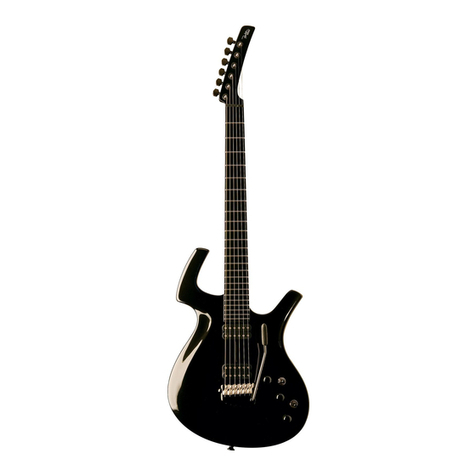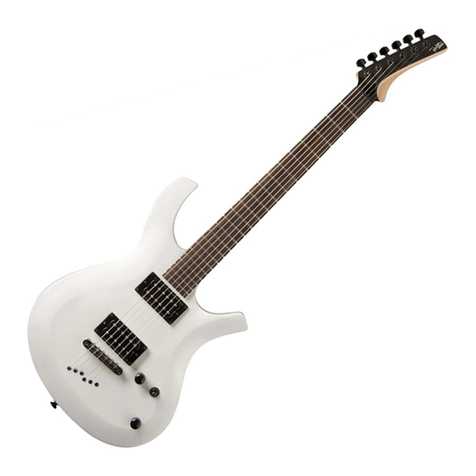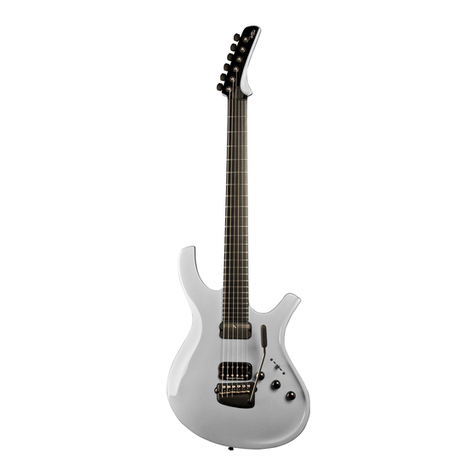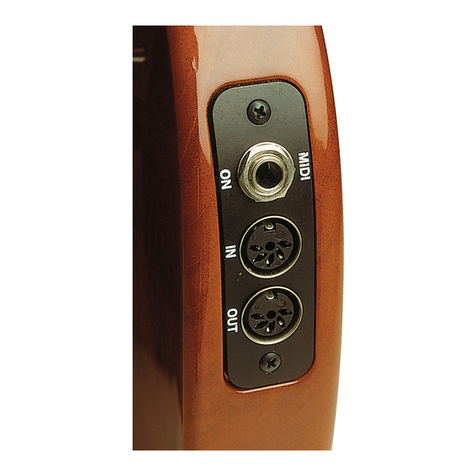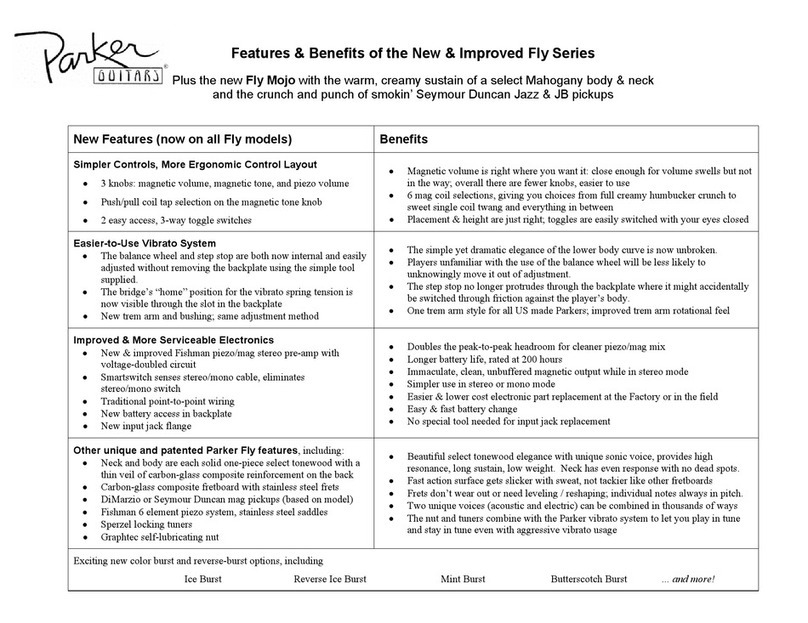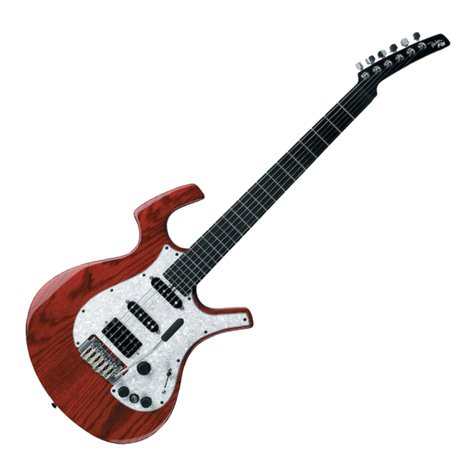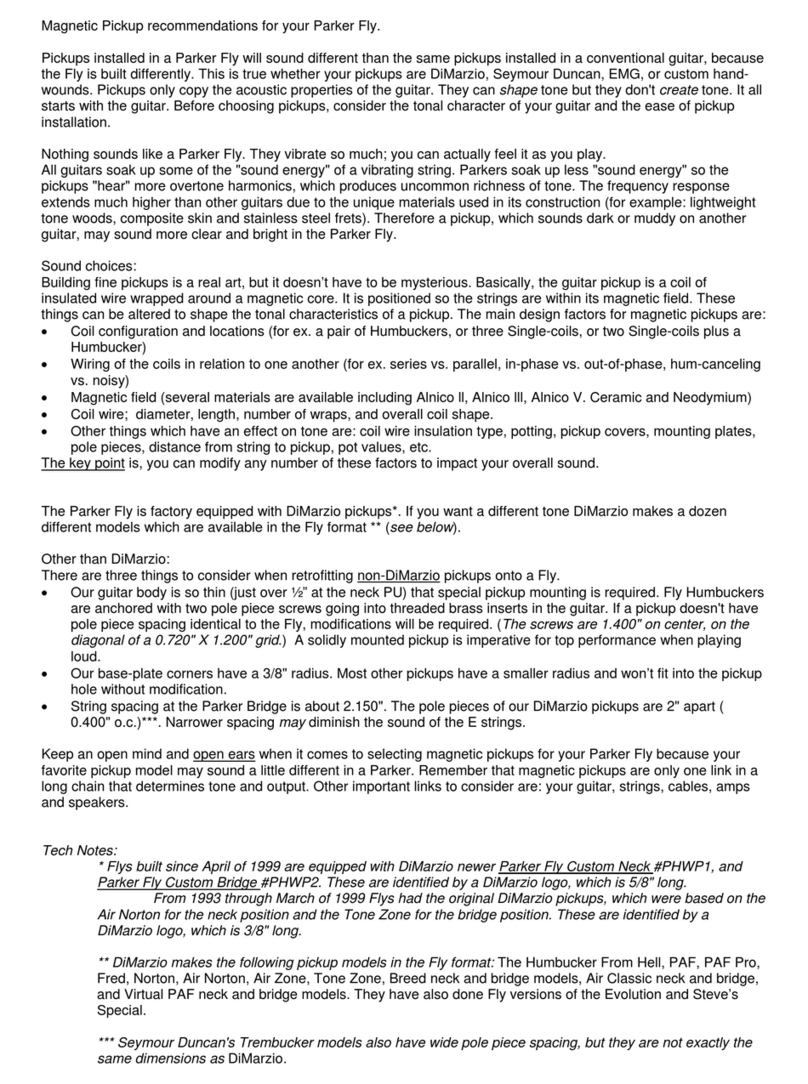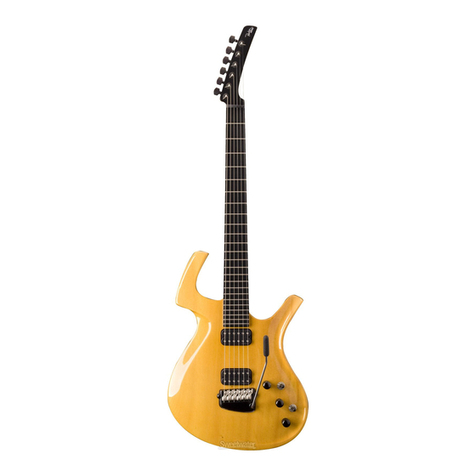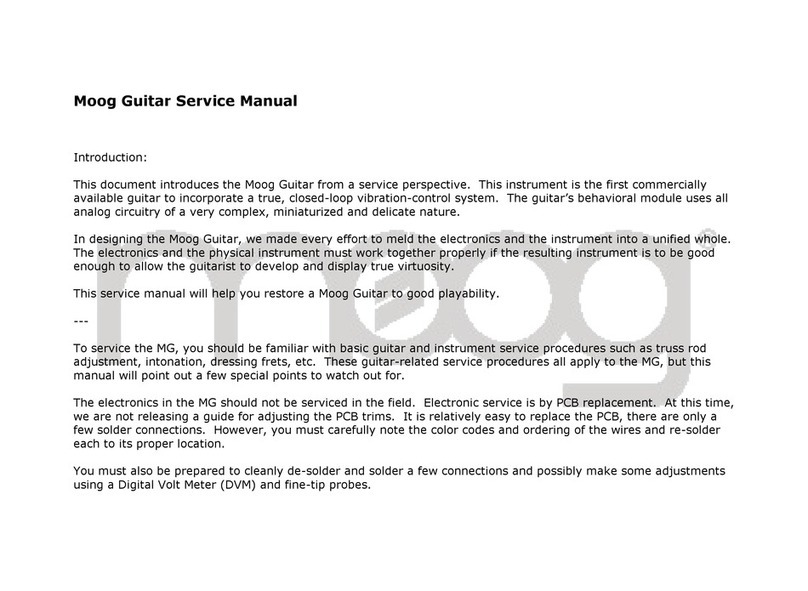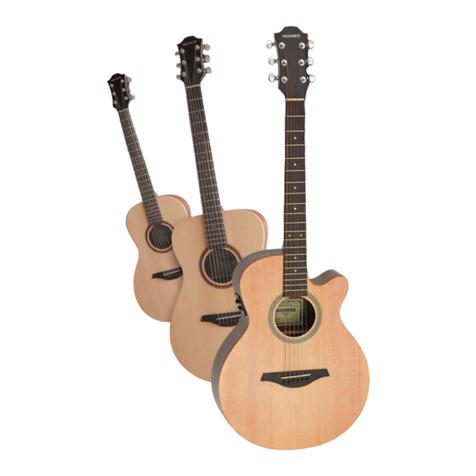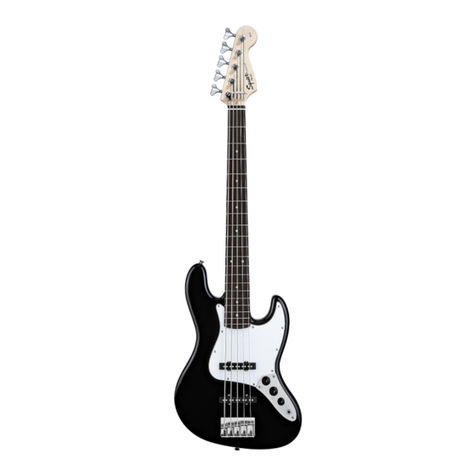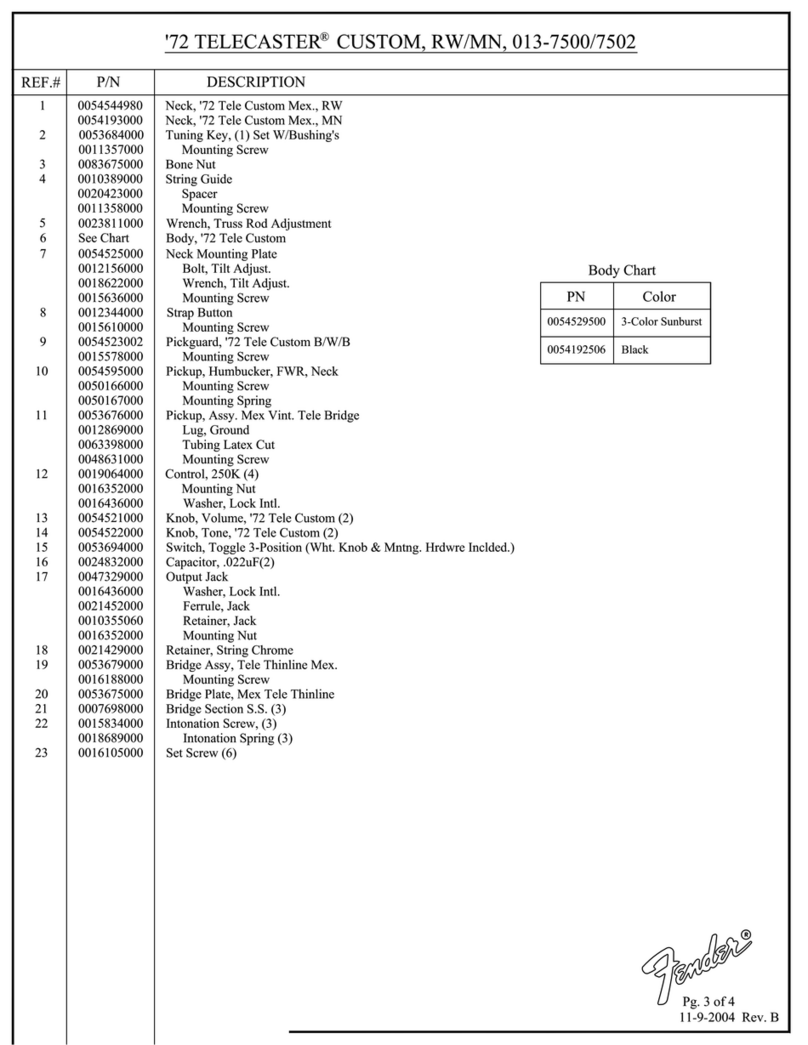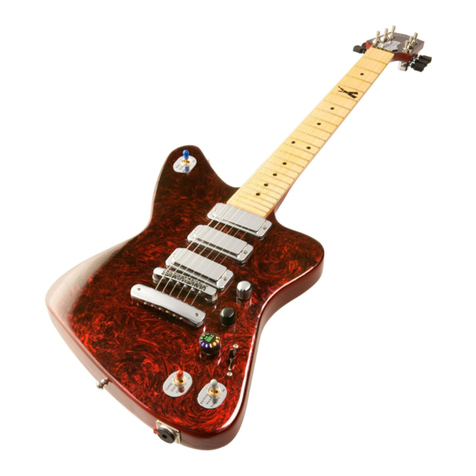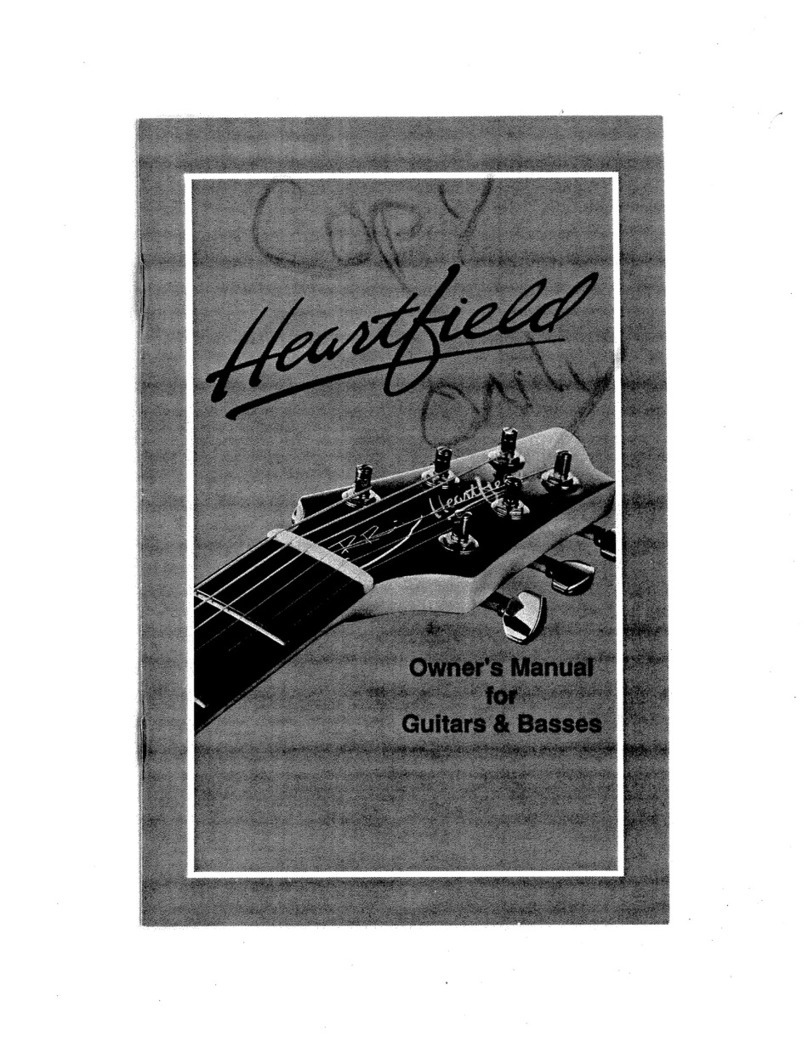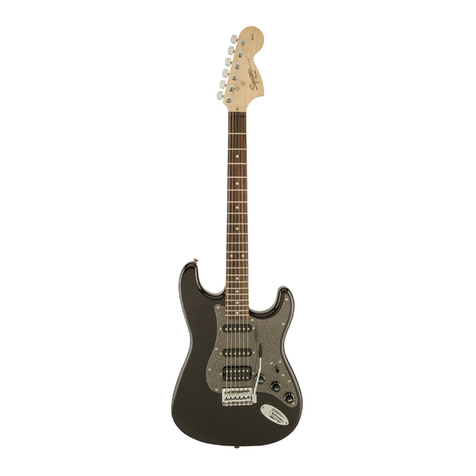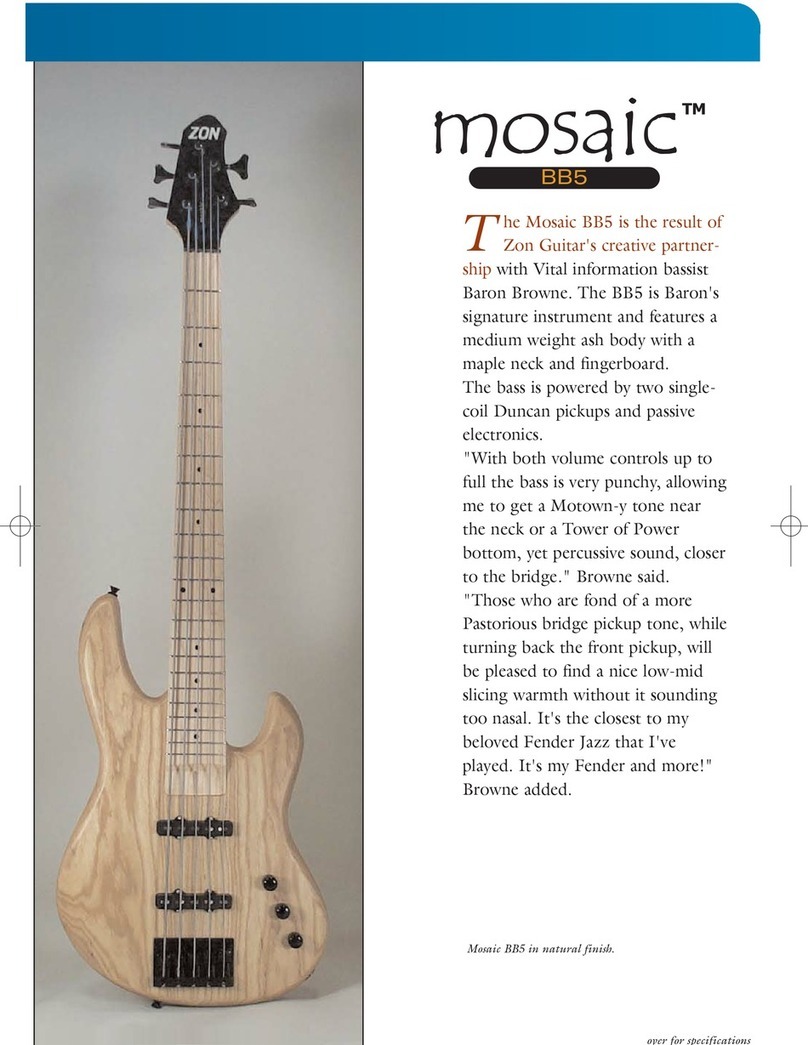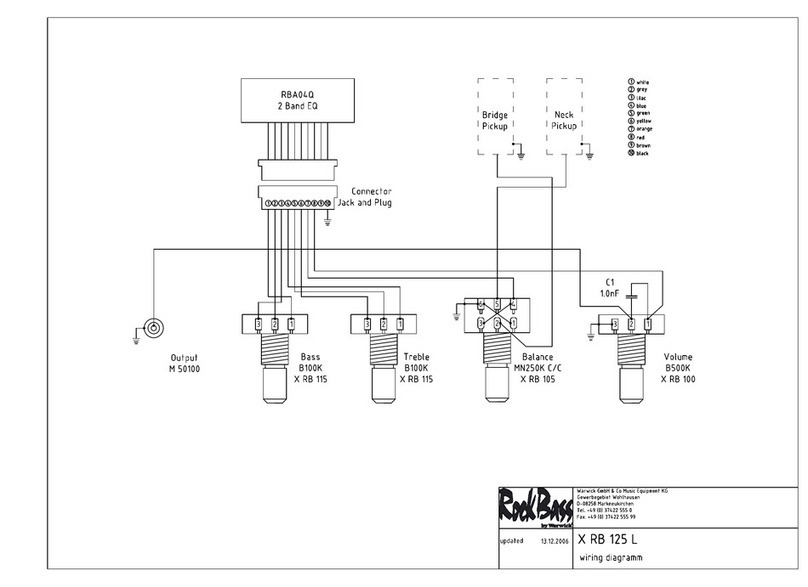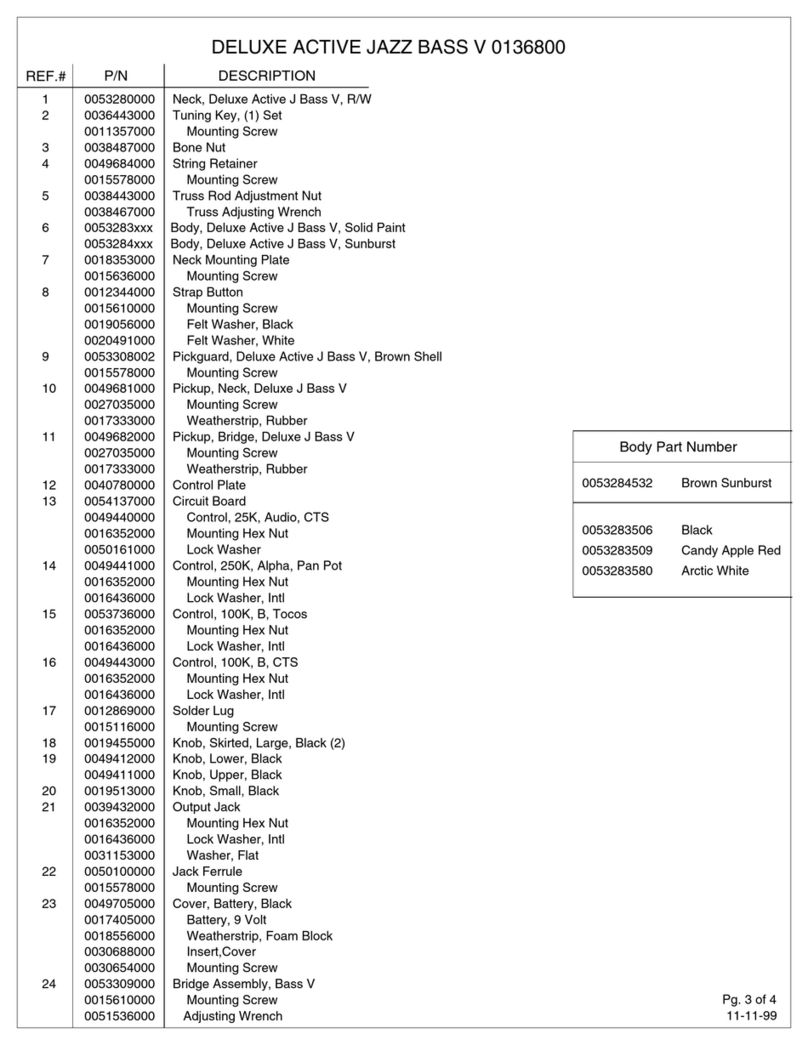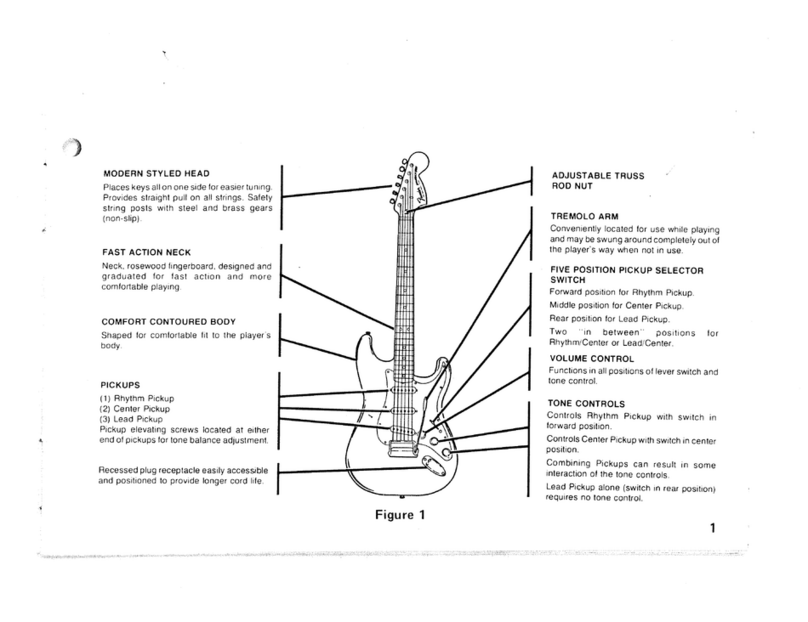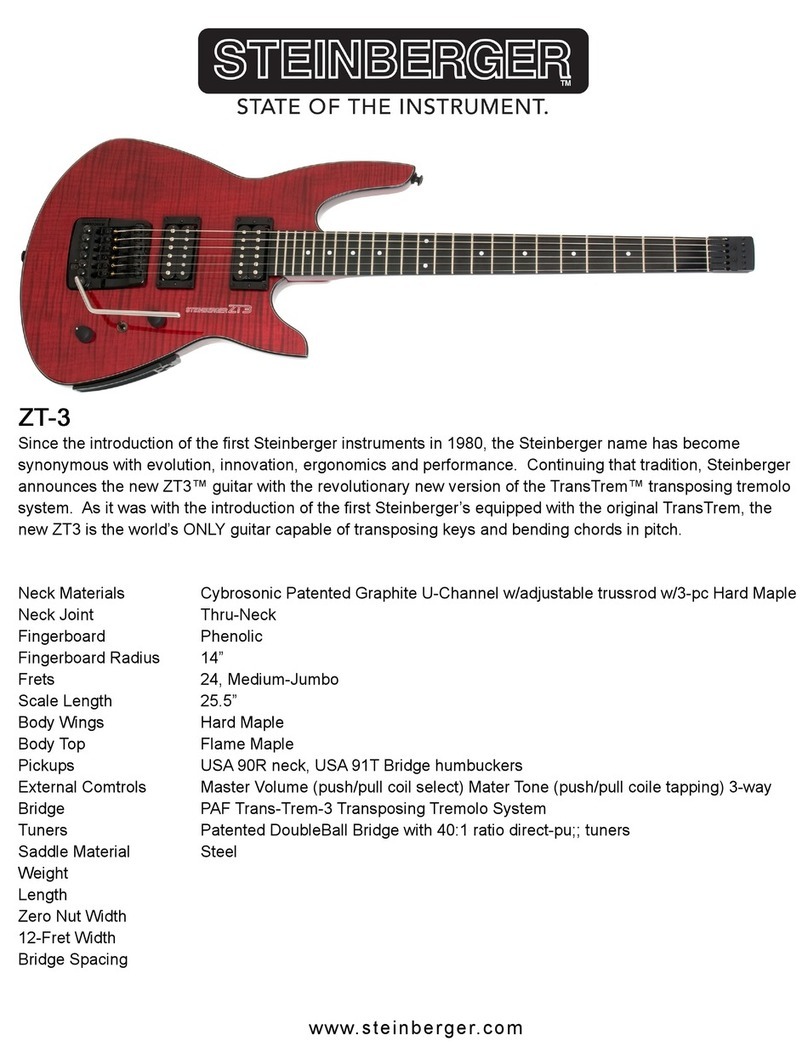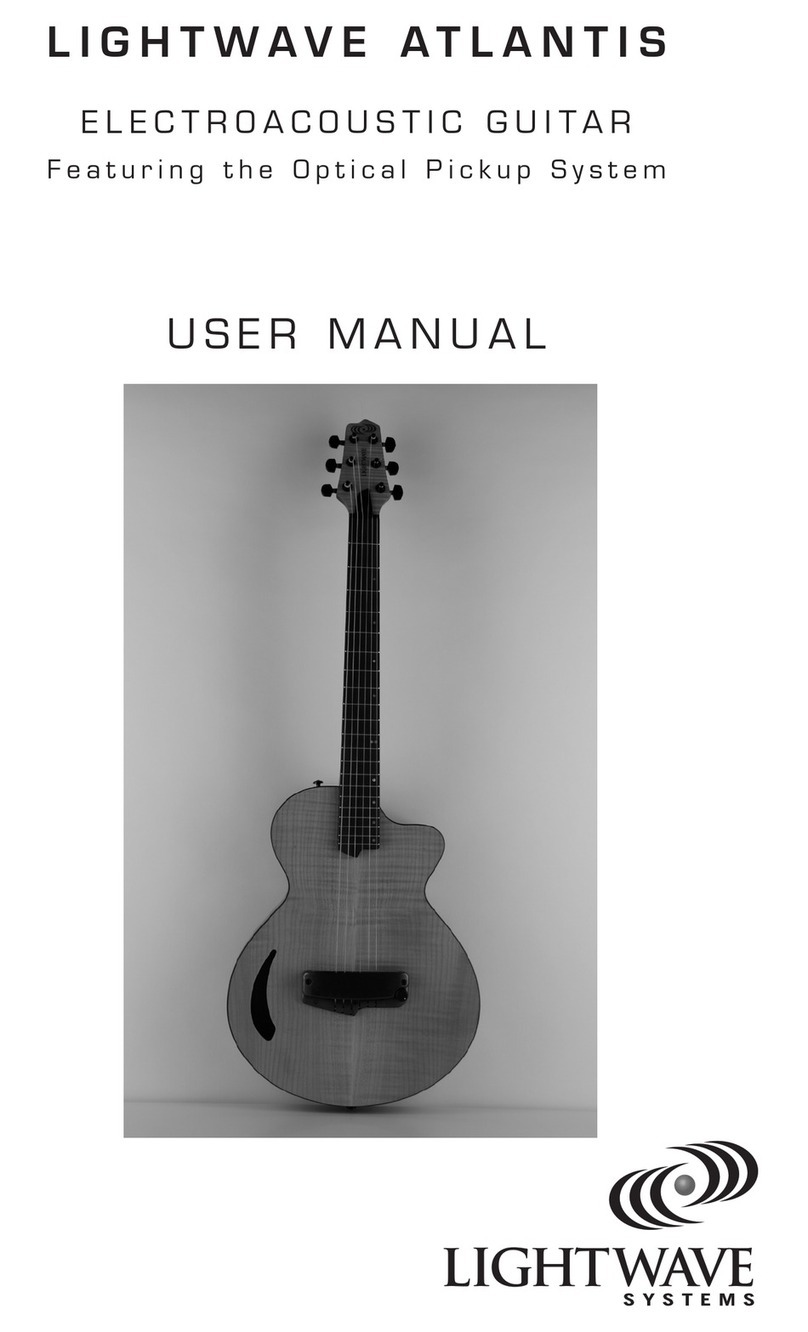
ADJUSTING YOUR GUITAR
If you're unfamiliar with adjusting instruments, we suggest that you
take your guitar to a qualified guitar technician. He or she can help
demonstrate these adjustments and you can decide which ones you
are comfortable making yourself and which ones you might prefer to
have made professionally.
Action
Action (bridge / string height) is adjusted by the two bridge post
screws located at the front edge of the bridge (illustration). Using the
larger 3mm allen wrench, turn the screws clockwise to lower the
bridge, and counterclockwise to raise it. Also, it's a good practice to
alternate between the two screws, taking no more than ¼ turn at a
time.
Individual string height is adjusted by the two small Allen screws on
each of the six bridge saddles. First loosen the saddle screw and then,
using the smaller 1.5mm allen wrench, turn the screws clockwise to
lower the saddle, and counterclockwise to raise it.
NOTE: Parker Nite-Fly guitars are shipped from the factory adjusted to a very low
action of .070" on the treble side and .080" on the bass, at the 14th fret (string open,
not fretted). If you lower your action even further, be aware that some buzzing may
occur.
Intonation
To set the intonation (string length), loosen the screws that hold the
bridge saddles using the smaller 1.5mm allen wrench supplied with
the guitar.
· If a string plays sharp: Insert the same 1.5 mm allen wrench into
the back of the saddle. Turn the screw clockwise to move the saddle
back to make the string length longer.
· If a string plays flat: Turn the screw counter-clockwise to move the
saddle forward to make the string length shorter.
Once the strings are intonated re-tighten the saddle screws. Do not
over-tighten the saddle-screws. The piezo-electric elements in the
bridge are delicate, so be careful.
Truss Rod Adjustment
If you're unfamiliar with adjusting a truss rod, we STRONGLY suggest
that you have this adjustment made by a qualified guitar technician.
The truss rod adjuster wheel is easily accessible. To adjust the truss
rod, use the steel rod capstan wrench supplied with your guitar. Rotate
the wheel towards the high E string to tighten the truss rod and
towards the low E string to loosen it.
NOTE: Over tightening WILL result in damaging the truss rod.
VIBRATO ADJUSTMENT
Start from HOME: When the bridge is adjusted parallel to the top of
the guitar and the guitar is in tune, the bridge is in the HOME position.
NiteFly Guitars are set up at the Parker Guitar Factory with D'Addario®
.009" - .042" strings. Three coil springs balance the tension of the
strings. When you change string gauges or use alternate tunings, you
alter the string tension. This changes the attitude of the bridge, and
therefore you will need to re-adjust the bridge to the HOME position.
To do this: Remove the back cover, and with the guitar tuned to pitch,
tighten or loosen the two Phillips head "CLAW" screws (see back of
guitar illustration) to reset the bridge parallel to the top of the guitar.
The NiteFly Vibrato is a high quality, stable system that can be
operated in three modes:
1. Balanced (Free-Floating): In this mode the bridge can bend up and
down. The Stop Screw must be adjusted (lowered) so that it won't
prevent the bridge from bending up. The HOME position of the bridge
is set by adjusting the Claw Screws (balancing the tension of the coil
springs).
2. Bend Down Only: The NiteFly comes set up from the Parker Guitar
factory in Bend Down mode. In this mode the bridge can only bend
down and returns HOME to rest lightly against the Stop Screw. The
springs must be tensioned slightly more than in the Balanced mode so
that the bridge at HOME is held against the Stop Screw. Unlike the
Balanced mode, you can rest your hand on the bridge without
throwing it out of tune.
3. Fixed: This mode is similar to Bend Down mode. HOME position is
also setup by contact with the Stop Screw. Additional spring force is
applied against the stop by tightening the Claw Screws. The bridge will
still bend down, but with a stiffer feel. In this mode you can bend a
string while other strings are sounded and not change their pitch. Like
the Bend Down mode, resting your hand on the bridge will not throw it
out of tune.
No matter which mode you prefer to use, it's quickest to tune, set
intonation, and adjust the action of your NiteFly when it's in the Fixed
mode.
Stop Screw
Using the larger 1/8" T-handle Allen wrench supplied with your guitar,
the Stop Screw can be adjusted to limit or stop the bridge from
bending up to any desired amount.
NOTE: When you raise or lower the Action you should also raise or lower the Stop Screw
by the same amount (unless the Stop Screw has already been fully lowered for the
Balanced mode).
Vibrato Bar Rotation Adjustment
To set the rotation tension of the vibrato bar (or to prevent the bar
from falling out), adjust the Allen screw, located on the bottom rear
edge of the bridge, using the smaller 3/32" T-handle Allen wrench
supplied with the guitar.
To do this: Insert the vibrato bar and push down so that the back of
the bridge lifts, allowing better access to the screw with the Allen
wrench. Adjust the screw to the preferred tension.
Phillips head
claw screws
Stop screw
Action
(bridge/string height)


